
Let's talk Australian Shepherds
Believe it or not, the Australian Shepherd is an American original, despite being named for Down Under. Their solid sense of self and endless energy was discovered by cattle ranchers in the western U.S. after the dog was brought there by Basque settlers via Australia. There are no borders for this beloved breed. Agile and always up for work, the Australian Shepherd has an even-keeled temperament that makes them a fabulous addition to any personal or professional abode.Official name: Australian Shepherd
Origins: United States of America

| Drooling tendencies |  |
Warm weather? |  |
| Shedding level |  |
Suited to apartment living? |  |
| Energy level (high, low, medium) *: | High | Family pet? * |
 |
| Compatibility with other pets |  |
Can stay alone?* |  |
* We advise against leaving pets alone for long stretches. Companionship can prevent emotional distress and destructive behaviour. Speak to your veterinarian for recommendations.
Every pet is different, even within a breed; this snapshot of this breed’s specifics should be taken as an indication.
For a happy, healthy and well-behaved pet, we recommend educating and socialising your pet as well as covering their basic welfare, social and behavioural needs.
Pets should never be left unsupervised with a child.
All domestic pets are sociable and prefer company. However, they can be taught to cope with solitude from an early age. Seek the advice of your veterinarian or trainer to help you do this.
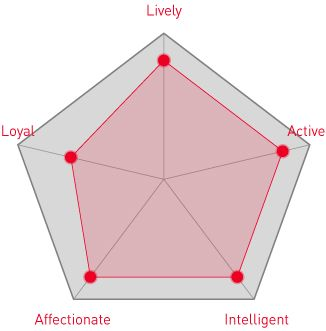

| Baby age: | Birth to 2 months |
| Puppy age: | 2 to 12 months |
| Adult age: | 1 to 7 years |
| Mature age: | 7 to 10 years |
| Senior age: | From 10 years |
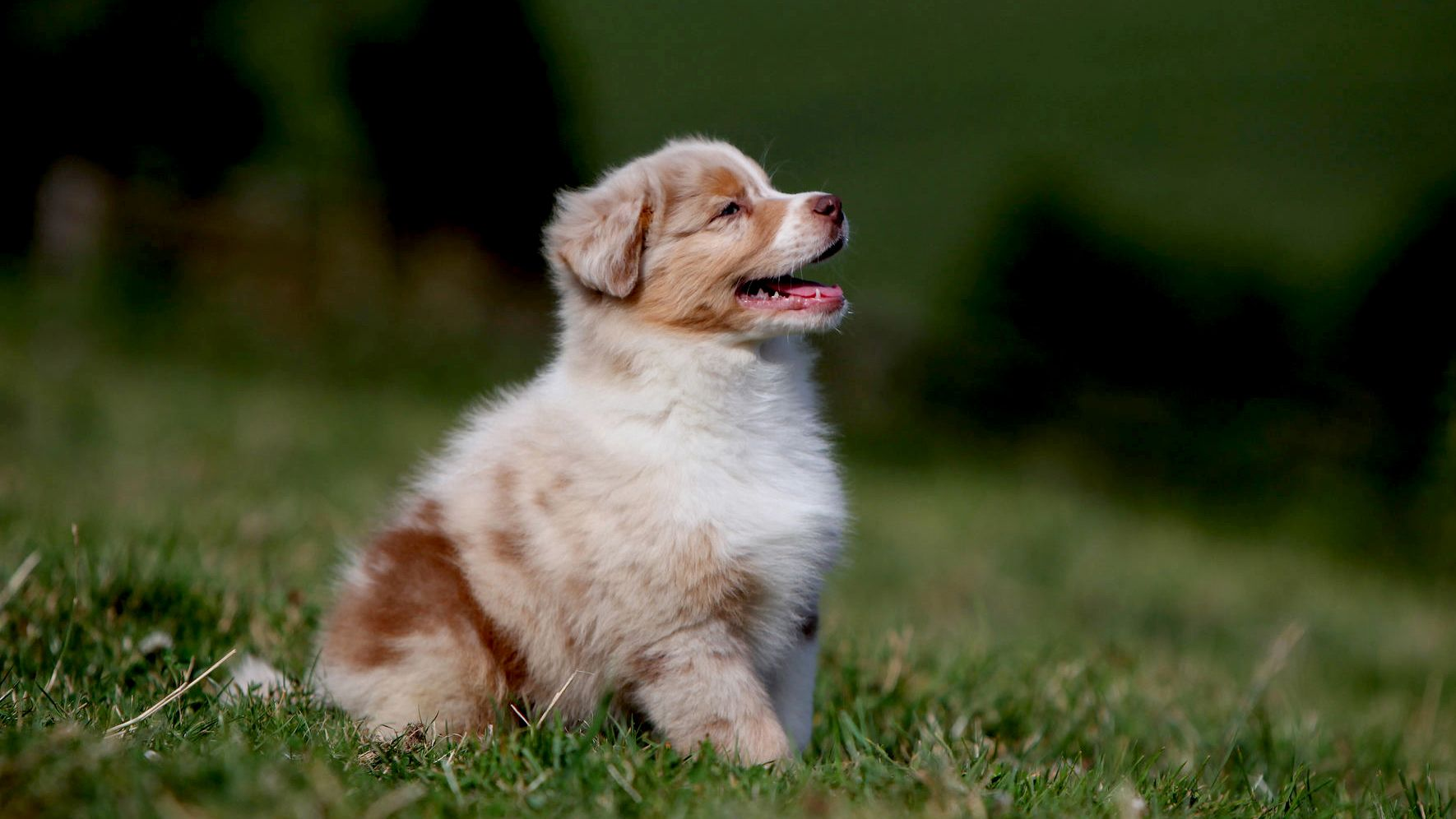
1/7
Get to know the Australian Shepherd
All you need to know about the breed
Three words best describe the Australian Shepherd: Extremely high energy. The breed is a delight, in appearance and in disposition. If your home has wide open fields or a large yard, you will have the pleasure of watching this breed blossom from puppyhood into a wonderful, carefree dog.
That said, make sure that exercise for your Australian Shepherd is daily and almost constant, whether they reside in the suburbs or the country. The breed is a superb family pet, a medium-sized dog with a bright face and tireless energy level. An equally active owner is best—marathoners welcome! Because of their deep roots in herding and ranch work, the Australian Shepherd is a staple in the American sport of rodeo. They excel at agility or obedience trials as well. Training for the Australian Shepherd is a cinch but strong discipline is key. Their incredible smarts are an asset on the job but they can be wiley if they want to. With an affinity for their owners, teaching your Australian Shepherd should be an enjoyable task in the end.
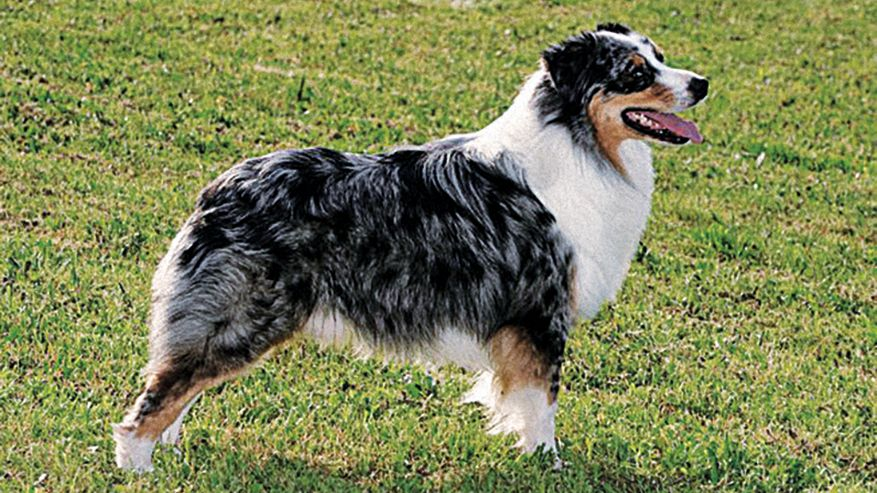
2/7
2 facts about Australian Shepherds
1. They. Must. Herd.
It cannot be overstated enough: This is a breed with an innate need to round things up. The Australian Shepherd dog has been highly bred over the years to work with livestock, so has developed a genetic desire to gather those in their midst—including children and other pets. As gentle dogs who are just doing their job, know they’ll comply with your wishes when they need to.
2. Lending a helping bark
Like all dogs, the Australian Shepherd barks but perhaps at times more than the average canine. It is, however, out of a sense of caring: The breed is a herding one from way back and feels the need to protect, sometimes fiercely, thus will “alert bark” if they perceive a threat in any way. With this kind of instinct, the Australian Shepherd makes a great family pet, for sure.
History of the breed
A truly international pedigree, the Australian Shepherd has benefitted from being bred in one country, named for another, and treasured in a third. The Australian Shepherd’s lineage spans several centuries, starting with their descent from herding breeds, namely Pyrenean Shepherds from the Basque region between France and Spain.
As wanderlust struck for the Basque people in the 1800s, they ventured to the faraway land and new continent of Australia. Sheep herding there necessitated a keen canine; the Australian Shepherd’s high intelligence fit perfectly. They were soon crossed with the Collie to sharpen the breed. Ever on the move, the Basques set out for new territory in California where the breed was embraced by cattle ranchers and named the Australian Shepherd after their supposed land of origin. The dog is now commonly seen on ranches, in rodeo, and used for search-and-rescue. The American Kennel Club recognised the breed in 1993.

4/7
From head to tail
Physical characteristics of Australian Shepherds
1. الأذنان
آذان مرنة ولكن ليست ثقيلة تتدلى بجانب رأس الكلب
2. الشعر
شعر قصير وكثيف فوق طبقة سفلية مقاومة للماء
3. الفراء
فراء يتراوح بين الأسود إلى لون الشوكولاتة أو الأصفر، ومن الكريمي الفاتح إلى المحمر
4. الذيل
ذيل منتصب وهو بطبيعته طويل ونادرًا ما يتوقف عن الاهتزاز – والجسم كله يمكن يهتز في بعض الأحيان.
5. الساقان والعمود الفقري
متناسب بشكل جيد، مع توازن جيد بين طول الساق والعمود الفقري.
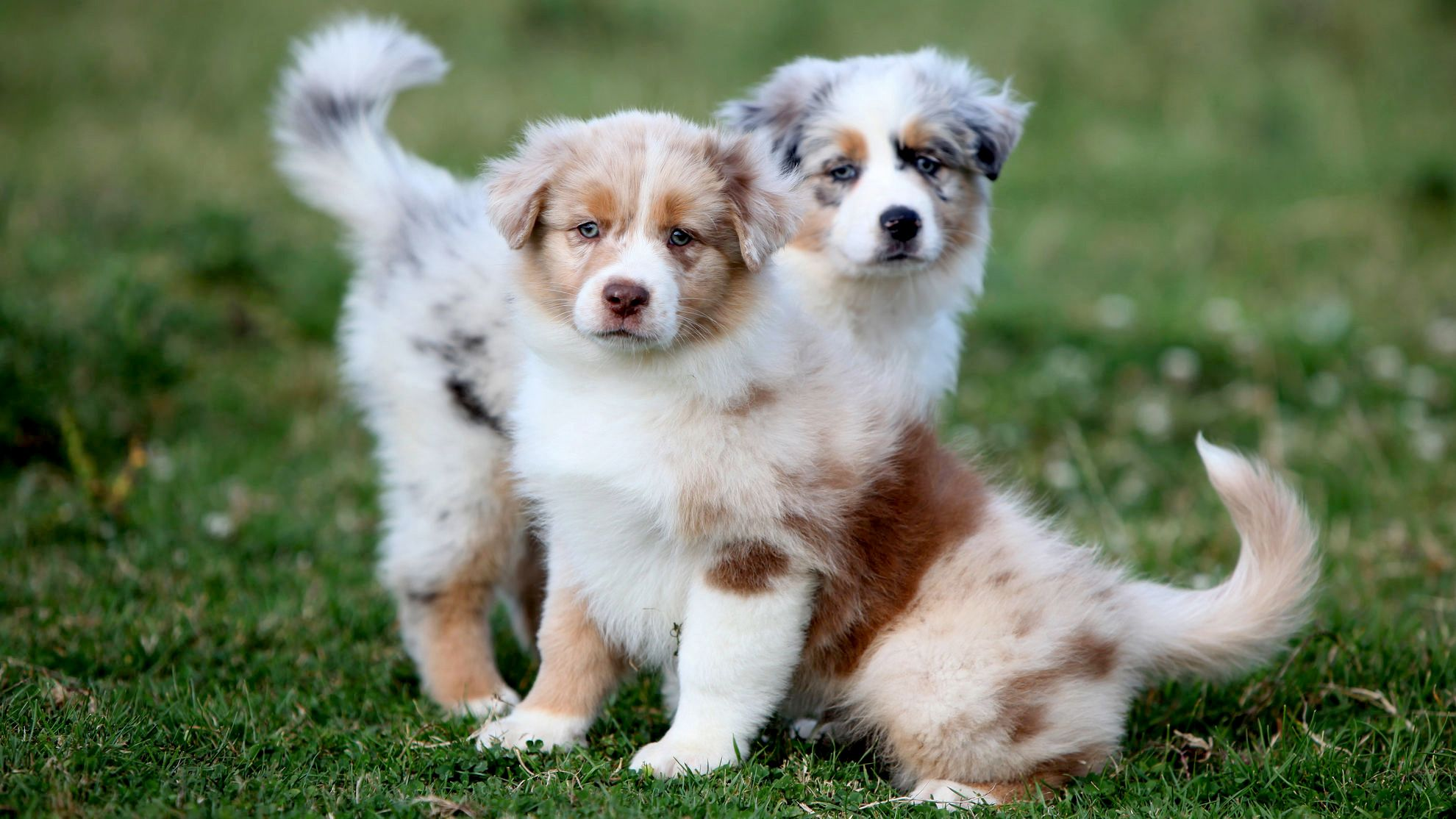
5/7
Things to look out for
From specific breed traits to a general health overview, here are some interesting facts about your Australian Shepherd
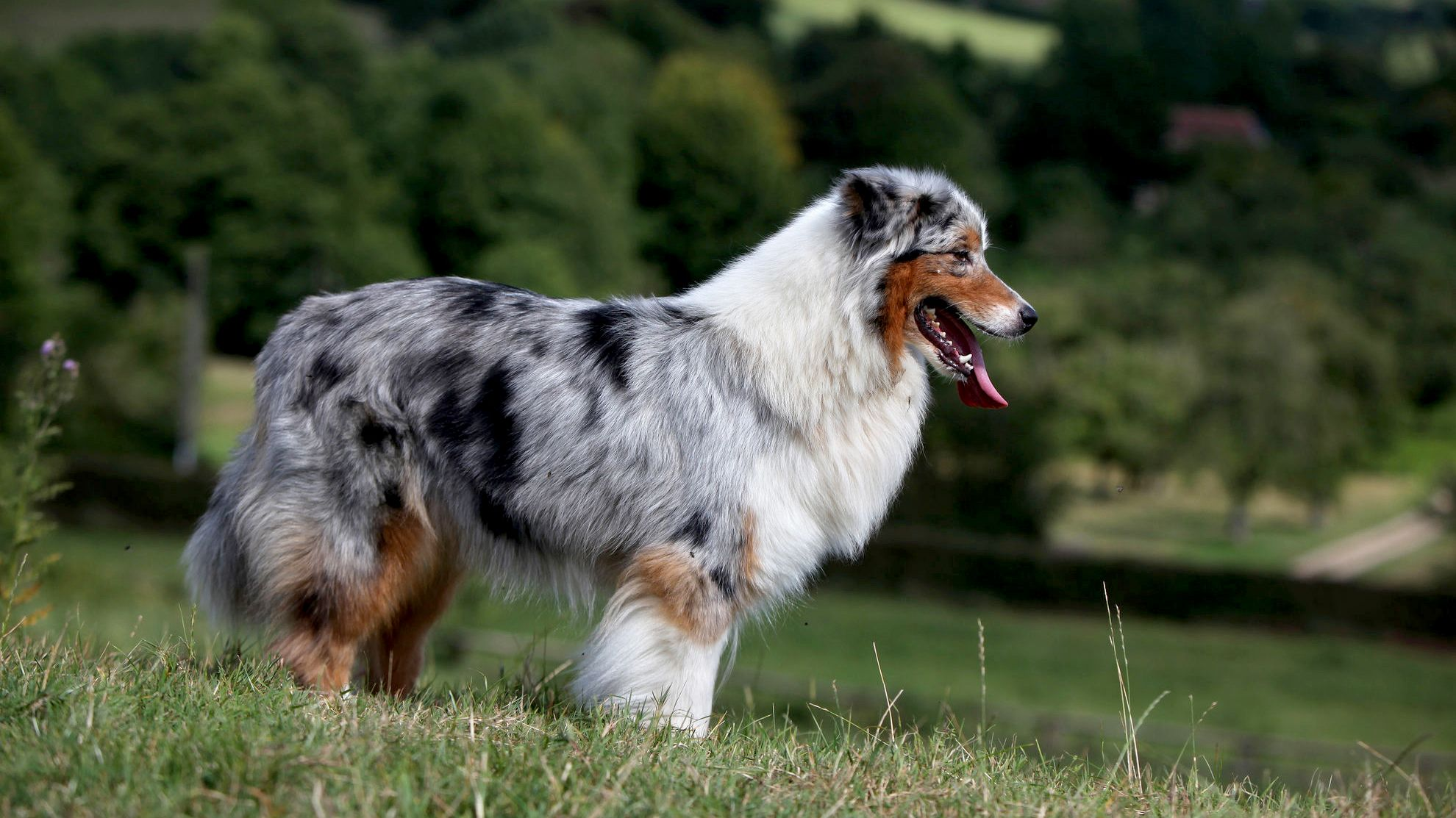
6/7
Caring for your Australian Shepherd
Grooming, training and exercise tips
The mature Australian Shepherd is graced with gorgeous, plush fur, which means a good deep brushing needs to happen once a week, especially important after outdoor runs since grass seeds may get trapped in their hair and cause abscesses. Bathe only when needed. As for exercise, it can’t be emphasised enough that the energy level of the Australian Shepherd is sky-high and running for the breed is second nature. Make sure you have a good large property, or take them on a few daily walks or runs yourself. As for training your Australian Shepherd, it must be firm. The breed can be crafty, and will look to outsmart an unsuspecting owner if they can. It’s not toward a menacing end but only that they have a strong mind. Start early to let them know who is in charge.
7/7
All about Australian Shepherds
In a word, yes. As a family dog, the Australian Shepherd is top notch. They are very even-tempered, content among their humans, and always looking for something to do—which, as a herding breed, could include herding children and other pets! It’s something they do only to be helpful. A better domestic match would be hard to find!
The Australian Shepherd personality is upbeat and gregarious—and energetic. But when they’re not bounding through the fields, the breed is indeed very glad to cuddle up—preferably to a family member as they don’t always take to people they don’t know. Some Australian Shepherds are more cuddly than others, that independent streak kicking in more or less depending on the dog.
Read more on this topic


How to adopt a dog

Things to consider before getting a dog
Sources
1 - Veterinary Centers of America https://vcahospitals.com/
2 - Royal Canin Dog Encyclopaedia. Ed 2010 and 2020
3 - Banfield Pet Hospital https://www.banfield.com/
4 - Royal Canin BHN Product Book
5 - American Kennel Club https://www.akc.org/